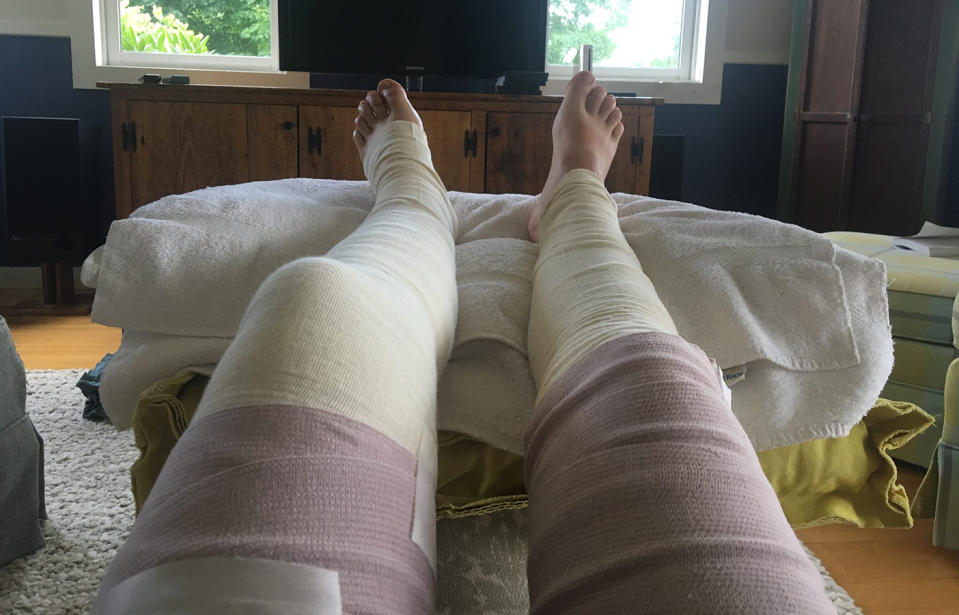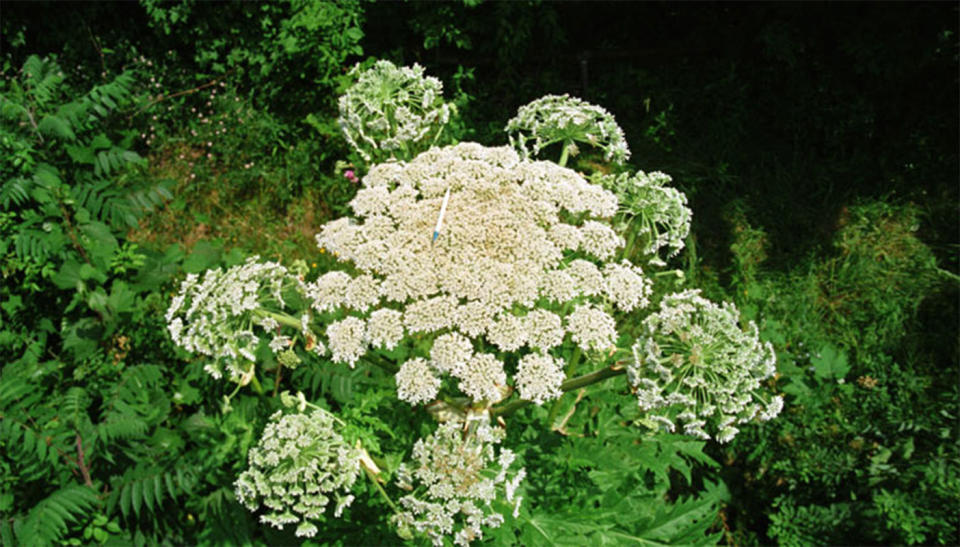Woman suffers horrific burns after brushing up against plant
WARNING, GRAPHIC IMAGES: A wild parsnip plant caused a woman’s leg to become severely blistered and inflamed after she brushed up against the poisonous flora.
Pictures of the enormous yellow blisters covering Charlotte Murphy’s leg show how severe the reaction was, with redness, itching and eventually pustules developing just over a week after exposure to the toxic plant. Her wounds were even comparable to second-degree burns.
The woman apologised for sharing such a confronting series of images of her blistered leg on social media, but said the pictures were necessary to warm others of the dangers of the wild plant.

“My hope in posting this unfortunate news is to create greater awareness for what WILD PARSNIP is …and the terrible things the OIL from its stem, leaves, and blooms can do to the skin (I’m not saying everyone will have the reaction I did) and to encourage people to spread the news,” she wrote on Facebook last Saturday.
Ms Murphy says she unknowingly rubbed up against broken leaves of the plant, then spent the day exercising in the sun, which triggered the reaction.
A few days later she noticed some painless, non-itchy bumps appear, then a week later the blisters worsened from itching in her sleep.


“Throughout the day, [the blisters] grew exponentially to a point where my leg was swollen and I couldn’t walk,” she wrote.
She was admitted to hospital and the rash also spread to her other leg, arms, and fingers.
Ms Murphy, of Essex, in the US state of Vermont, said doctors compared her reaction to a second-degree chemical burn. She is currently being treated at the University of Vermont’s Trauma and Burn Centre and is expected to make a full recovery.
The parsnip plant, known in Australia as giant hogweed (heracleum mantegazzianum) exists mostly in Adelaide, South Australia.

Its sap is phototoxic, so if it comes into contact with the skin then exposed to UV rays or sunlight, it can cause severe skin inflammations like Ms Murphy’s case.
In Australia, giant hogweed is a tall biennial or perennial herb which grows to a height of four to six metres, with leaves that initially form a rosette of small white flowers, The Australian Government’s Department of Environment and Energy confirmed.
It has ribbed, dark reddish-purple hollow stems five to 10 centimetres in diameter, which produce a toxic sap, along with the bristles on its leaf stalks.
Giant hogweed was not yet established as a weed in Australia, but has the potential to become a significant weed if it becomes naturalised, the government department said.


